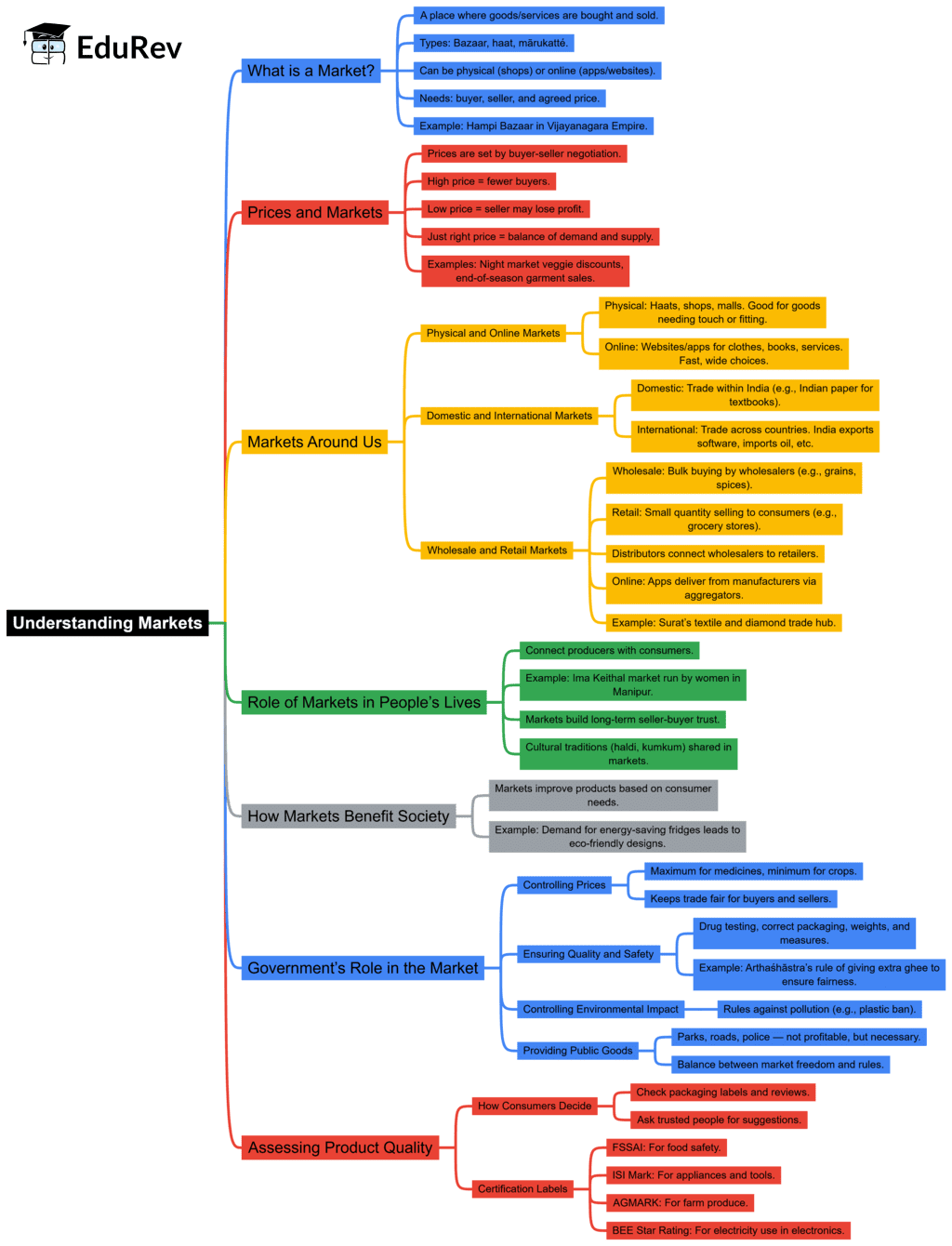Class 7 Exam > Class 7 Notes > Subject-Wise Mind Maps for Class 7 > Mind Map: Understanding Markets
Class 7 Social Science Chapter 12 Mindmap - Understanding Markets

The document Class 7 Social Science Chapter 12 Mindmap - Understanding Markets is a part of the Class 7 Course Subject-Wise Mind Maps for Class 7.
All you need of Class 7 at this link: Class 7
FAQs on Class 7 Social Science Chapter 12 Mindmap - Understanding Markets
| 1. What are the main types of markets studied in Class 7? |  |
Ans. In Class 7, students typically learn about different types of markets, including local markets, national markets, and global markets. Local markets are where goods are bought and sold within a small area, national markets encompass a larger region within a country, and global markets involve trade between countries around the world.
| 2. How do supply and demand affect market prices? |  |
Ans. Supply and demand are fundamental concepts in economics that influence market prices. When the demand for a product increases and supply remains constant, prices tend to rise. Conversely, if the supply of a product increases while demand remains constant, prices usually fall. This interaction helps determine the market equilibrium price.
| 3. What role do consumers play in a market economy? |  |
Ans. Consumers play a crucial role in a market economy by driving demand for goods and services. Their preferences and purchasing decisions influence what products are produced and how much is supplied. When consumers express their likes and dislikes through spending, businesses respond by adjusting their offerings to meet consumer needs.
| 4. What is the significance of competition in markets? |  |
Ans. Competition in markets is significant because it encourages businesses to improve their products and services, leading to better quality and lower prices for consumers. It also fosters innovation, as companies strive to differentiate themselves from their competitors. This dynamic environment ultimately benefits consumers and contributes to economic growth.
| 5. How do government regulations impact markets? |  |
Ans. Government regulations can impact markets in various ways. They can set standards for product safety, protect consumers' rights, and prevent monopolies, which helps maintain fair competition. Regulations can also affect pricing and availability of goods by imposing taxes or tariffs, influencing how businesses operate within the market.
Related Searches





















